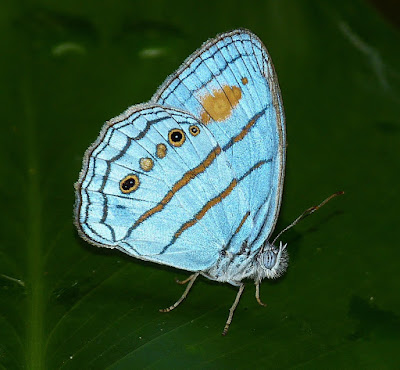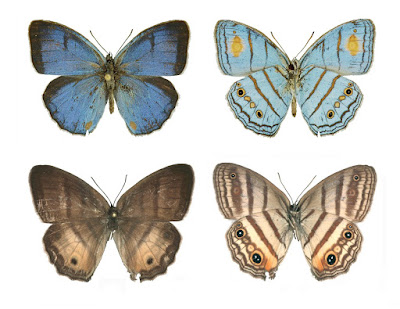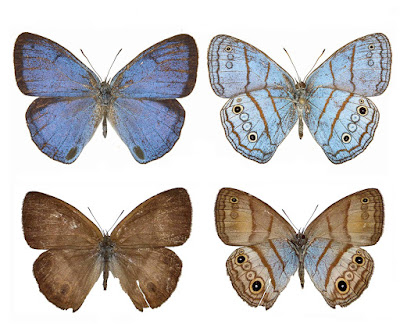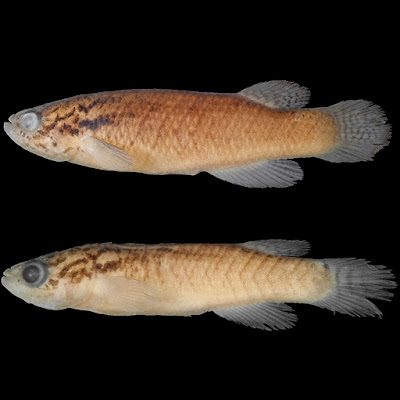[Most Recent Entries] [Calendar View]
Tuesday, August 1st, 2017
| Time | Event | ||
| 12:03p | [Entomology • 2017] Remarkable Sexual Dimorphism, Rarity and Cryptic Species: A Revision of the ‘aegrota species group’ of the Neotropical Butterfly Genus Caeruleuptychia Forster, 1964 (Lepidoptera, Nymphalidae, Satyrinae) with the Description of Three Ne
Abstract The ‘aegrota species group’ of the Neotropical nymphalid genus Caeruleuptychia Forster, 1964, in addition to three other superficially similar, enigmatic species in the genus, are revised. A lectotype is designated for Euptychia aegrota Butler, 1867, E. aetherialis Butler, 1877 stat. rev., E. helios Weymer, 1911 and E. pilata Butler, 1867, and C. aetherialis is resurrected from its synonymy with C. aegrota. Caeruleuptychia helios caelestissima Brévignon, 2010, syn. nov., and Magneuptychia keltoumae Brévignon & Benmesbah, 2012, syn. nov. are both regarded as junior subjective synonyms of C. helios (Weymer, 1911), as a result of the discovery and first illustration of the female of this taxon. The female of C. aegrota is also described and illustrated for the first time, and three new species, Caeruleuptychia trembathi Willmott, Nakahara, Hall & Neild, sp. nov., C. scripta Nakahara, Zacca & Huertas, sp. nov., and C. maryzenderae Lamas & Nakahara, sp. nov. are described and named. We analyze morphological and molecular data separately, in addition to combining morphological data with molecular data, to provide the first phylogenetic hypothesis for the taxa treated in this revision. Keywords: eastern Andes; Amazonian forest; DNA barcode; synonym; taxonomy; Euptychiina; lectotype; Magneuptychia Shinichi Nakahara, Thamara Zacca, Blanca Huertas, Andrew F. E. Neild, Jason P. W. Hall, Gerardo Lamas, Lauren A. Holian, Marianne Espeland and Keith R. Willmott. 2017. Remarkable Sexual Dimorphism, Rarity and Cryptic Species: A Revision of the ‘aegrota species group’ of the Neotropical Butterfly Genus Caeruleuptychia Forster, 1964 with the Description of Three New Species (Lepidoptera, Nymphalidae, Satyrinae). Insect Systematics & Evolution. DOI: 10.1163/1876312x-00002167 A case of mistaken identity: DNA links male, female butterfly thought to be distinct species. | ||
| 4:15p | [Ichthyology • 2017] Melanorivulus nelsoni • A New Pelvic-less Species of Melanorivulus Costa (Cyprinodontiformes: Cynolebiidae), with A Discussion on the Pelvic-fin Absence in Killifishes
Abstract Melanorivulus nelsoni, new species, is described from a stream draining into the upper rio Paraguai basin, in the municipality of Juscimeira, State of Mato Grosso, Brazil. It is distinguished from all other congeners, except M. pictus (Costa) and M. planaltinus (Costa & Brasil), by the lack of the pelvic fin and girdle (although only in M. nelsoni they are invariably absent). Furthermore, M. nelsoni is distinguished from all other congeners, except M. pindorama, M. pinima and M. rutilicaudus, by having 10 transverse series of scales. Additional characters are provided to distinguish M. nelsoni from these and other congeners. The analysis of a large number of M. pictus specimens showed that this species occasionally exhibits a single or no pelvic fins. We found phenotypical evidence that the absence of pelvic fins in Melanorivulus species is likely genetically controlled by an allele that, when in heterozygosity, may result in unpredictable phenotypes. Data gathered from literature, along with our own results, suggest that the Cyprinodontiformes, especially the Cynolebiidae and the Cyprinodontidae, have a particularly high probability of evolving absence of pelvic fins, which is usually associated with body elongation. We suggest that in the case of Cyprinodontiformes this evolutionary trend might be related to the shape and position of the vertical fins. Keywords: Pisces, Cerrado, Development, Evolutionary trends, Hind limb, Rivulidae, Taxonomy, tbx4 Gabriel de Carvalho Deprá, Hugmar Pains Silva and Weferson Júnio da Graça. 2017. A New Pelvic-less Species of Melanorivulus Costa (Cyprinodontiformes: Cynolebiidae), with A Discussion on the Pelvic-fin Absence in Killifishes. Zootaxa. 4300(1); 111–124. DOI: 10.11646/zootaxa.4300.1.6 |
| << Previous Day |
2017/08/01 [Calendar] |
Next Day >> |





